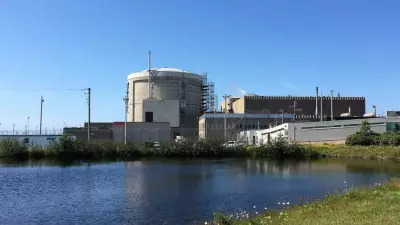
In a strategic move that bridges defense cooperation and clean energy innovation, former Bank of Canada governor Mark Carney recently conducted a high-profile tour of HD Hyundai Heavy Industries' massive shipyard in Ulsan, South Korea. The visit underscores Canada's growing involvement in international security partnerships and its commitment to sustainable technology development.
Strategic Shipyard Inspection
Carney's detailed examination of the world-class shipbuilding facilities came during his participation in a Canadian trade mission focused on strengthening economic ties between the two nations. The sprawling Ulsan complex, renowned for constructing some of the most advanced naval vessels globally, provided a dramatic backdrop for discussions about Canada's evolving role in global security architecture.
AUKUS Submarine Connection
The tour holds particular significance given Canada's potential involvement in the AUKUS security pact's second pillar, which focuses on developing advanced military technologies including nuclear-powered submarines. Carney's inspection of submarine construction capabilities signals Canada's serious interest in contributing to allied defense initiatives while leveraging its technological expertise.
During the visit, Carney emphasized the dual-purpose nature of such collaborations, noting that "the same innovation driving naval advancements can accelerate our transition to clean energy solutions." This perspective aligns with his current role as the United Nations special envoy on climate action and finance.
Beyond Defense: Clean Energy Synergies
The former central banker's engagement extended beyond military applications to explore how shipbuilding technologies could advance Canada's green energy objectives. HD Hyundai's work on ammonia-powered vessels and other eco-friendly maritime solutions presents opportunities for knowledge exchange that could benefit Canada's burgeoning clean technology sector.
Carney highlighted the complementary nature of Canadian and Korean technological strengths, suggesting that partnerships in naval development could naturally expand to include collaborative projects in renewable energy infrastructure and low-carbon transportation.
Economic Implications for Canada
The shipyard visit occurs against the backdrop of ongoing discussions about how Canada might participate in AUKUS working groups. While not a formal member of the trilateral pact between Australia, the United Kingdom, and the United States, Canada possesses specialized technologies and expertise that could prove valuable to the alliance's objectives.
Canadian industries stand to benefit from involvement in supply chains for advanced naval projects, potentially creating high-value jobs and driving innovation in related sectors. The connection between defense technology and civilian applications represents a significant economic opportunity for Canadian technology firms.
Strengthening International Partnerships
Carney's tour reinforces the deepening economic and security relationship between Canada and South Korea, building on the countries' existing free trade agreement. The engagement demonstrates how senior Canadian figures are working to position the country within emerging security frameworks while advancing its climate and economic interests.
This diplomatic effort comes at a crucial time as nations reassess supply chain security and technological sovereignty in an increasingly complex geopolitical landscape. Canada's dual focus on security cooperation and clean energy leadership, as exemplified by Carney's shipyard visit, represents a sophisticated approach to international engagement in the 21st century.





